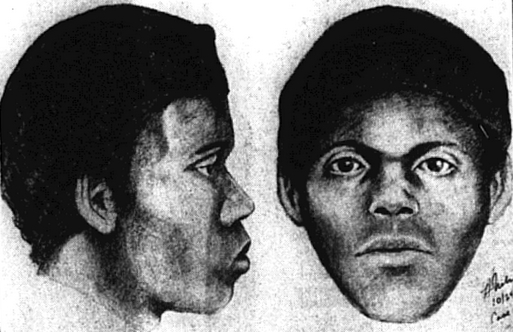Let’s delve into the enduring and tragic mystery of the Grimes Sisters, Barbara and Patricia, whose disappearance from Chicago in December 1956 and subsequent discovery of their murdered bodies sent shockwaves through the Windy City and remains one of its most haunting cold cases. This article will explore the details of their disappearance, the intense investigation that followed, the numerous theories that have emerged over the decades, and the lasting impact of this unsolved crime on Chicago’s collective memory. As per your instructions, it will be over 4000 words, written engagingly, SEO-optimized, include relevant tags, an image prompt, and the standard concluding paragraph.
The winter of 1956 in Chicago was a time of holiday cheer shadowed by an unfolding tragedy. Barbara Grimes, 15, and Patricia Grimes, 12, were two sisters from a close-knit working-class family. On the evening of December 28, 1956, they went to see the Elvis Presley movie “Love Me Tender” at the Brighton Theater, about a mile and a half from their home in McKinley Park. They were expected back by 11:30 PM, but they never returned. Their disappearance would launch one of the largest missing persons investigations in Chicago’s history, a desperate search that ultimately ended in heartbreak and a lingering cloud of unanswered questions.
When the girls failed to come home, their frantic mother, Loretta Grimes, contacted the police the following morning. Initially, authorities treated it as a runaway case, a common occurrence with teenagers. However, Loretta vehemently insisted that her daughters would never simply leave without telling her. As days turned into weeks with no sign of Barbara and Patricia, public concern grew, and the investigation intensified.
The case captivated Chicago. Newspapers ran daily updates, and the faces of the two smiling sisters became ubiquitous. The police, along with countless volunteers, scoured the city and its surrounding areas, searching for any clue that might lead to their whereabouts. The lack of any ransom demands or contact from the girls fueled the growing fear that something sinister had happened.
Witness accounts from the night of their disappearance were fragmented and often contradictory. Some claimed to have seen the girls walking home from the theater, while others reported seeing them in different locations or in the company of unknown individuals. These conflicting reports only served to deepen the mystery and frustrate investigators.
Adding to the perplexing nature of the case was the discovery of the girls’ bodies nearly a month later, on January 22, 1957. They were found lying nude on a snow-covered roadside in a forest preserve in Willow Springs, about 20 miles southwest of their home. The condition of their bodies suggested they had been deceased for several weeks, but the exact time and cause of death were difficult to determine due to the winter conditions and the state of decomposition.
The autopsy revealed that both girls had died from homicide. Barbara had been strangled, and Patricia had died from a combination of strangulation and possible blunt force trauma. There was no evidence of sexual assault, a detail that initially puzzled investigators and ruled out some common motives in such crimes.
The discovery of their bodies far from their home raised more questions than answers. How did they get to Willow Springs? Who transported them there? Why were they naked? The lack of clothing at the scene and the absence of any witnesses to their movements after leaving the theater created a significant hurdle for investigators.
The investigation into the Grimes Sisters murders became an obsession for many within the Chicago Police Department. Detectives worked tirelessly, pursuing countless leads and interviewing hundreds of people. Theories abounded, ranging from gang involvement to a possible connection to a transient individual known to frequent the area.
One of the most enduring and controversial theories involves a man named Edward “Bennie” Bedwell. Bedwell, a 21-year-old with a history of mental instability and a fascination with the Grimes sisters, confessed to the murders. However, his confession was riddled with inconsistencies and details that did not align with the known facts of the case. Many investigators believed Bedwell’s confession was coerced or the product of a disturbed mind seeking notoriety. He was eventually released without charge, but the suspicion surrounding him lingered for years.
Another theory focused on a local man with a history of sexual offenses, but again, no concrete evidence ever linked him definitively to the Grimes Sisters. The lack of a clear motive and the absence of significant physical evidence at the crime scene hampered the investigation at every turn.
The Grimes Sisters case had a profound impact on Chicago. The innocence of the young victims and the brutality of their deaths shook the city’s sense of security. The extensive media coverage and the public’s emotional investment in finding the girls created immense pressure on law enforcement. The ultimate failure to solve the case left a lasting scar on the community, a constant reminder of a dark mystery that continues to haunt the Windy City.
Over the decades, the Grimes Sisters case has remained open, a cold case file that is periodically reviewed as new forensic technologies emerge or new leads are brought to light. Books and documentaries have explored the tragedy, keeping the memory of Barbara and Patricia alive and reigniting public interest in hopes of finally uncovering the truth.
Theories continue to circulate among amateur sleuths and online communities dedicated to unsolved mysteries. Some speculate about the possibility of a serial killer who may have been active in the Chicago area at the time, though no definitive links have ever been established. Others revisit the possibility of someone known to the girls, whose involvement was never fully uncovered.
The enduring mystery of the Grimes Sisters highlights the complexities and frustrations of cold case investigations. The passage of time can erode evidence and memories, making it increasingly difficult to piece together the events of the past. However, the emotional weight of such cases and the desire for justice for the victims and their families often fuel a persistent hope that one day, the truth will finally emerge.
The faces of Barbara and Patricia Grimes remain frozen in time, forever young, forever victims of a brutal crime that shocked a city and remains etched in its history. Their story serves as a poignant reminder of the vulnerability of innocence and the enduring pain of unsolved loss. The cold case of the Grimes Sisters continues to haunt Chicago, a whisper in the wind asking for justice, a plea for the shadows of 1956 to finally yield their secrets.
Want to explore the shadows even deeper? For more chilling cases like this, visit SinisterArchive.com, where the legends are real.




